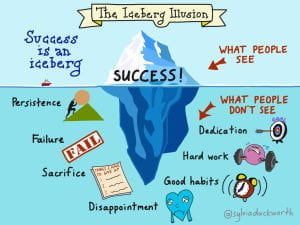Intro
Do you know all the facts about the Colonization ‘on our home on native land’? I doubt it. We researched the impact of colonization on Indigenous communities and the lasting consequences it has had on their cultures and societies. We explored the loss of land, language, and traditions.
Re-cap
Within this project, we were tasked with making an 11-15 slide keynote that answered our question ‘What were the consequences of colonization’ in a group of three to four. We presented it twice to the grade 11 BCFP class, and they filled out a feedback form after telling us how we did. They then designed a project for us, a mini keynote that had to answer the driving question in 2 slides and 6 words in total.
Driving Question
What were the Consequences of Colonization?
Favourites
Some of my favourite moments of this project was when we were presenting to the 11’s. We have a few slides in our keynote about the exploitation of the indigenous people both in the past, and the present, many of which, Carmyn was supposed to say. In both our first and second presentation, Carmyn would say ‘exfoliation’ instead of ‘exploitation’! It was both the most hilarious and mortifying part of the projects.
Keynotes
Group
I was put into a group with Carmyn, and Gemma to research and put together the slideshow. We separated and researched diffrent parts of consequences of colonization. I took ‘Pre-Colonial Health’, Gemma took ‘What diseases did the Europeans bring’ and Carmyn tackled ‘How did the disease affect the Indigenous Peoples’. We also researched the exploitation of the Indigenous peoples, and some of the history of colonization.
We presented our finished Keynote to the grade 11 BCFP class a few days ago. During our first presentation, we had a bit of trouble getting organized, and had a hard time with our cue cards. But I can see so much progress from our first to second presentation, which is shown in the cards the 11’s filled out after watching our presentation. The first group gave us feedback telling us that we could have been more prepared, with ‘less looking down at your notes’, but the second group had no negative feedback to give. ‘I thought it was good, no real criticism.’ It felt really good to get the feedback from the 11’s, and I hope we can do more projects with the other grades. It added a lot to the project, compared to if we were just presenting to our class. It felt like we should put in a bit more effort, and that we should care a little bit more what they thought because they had so much more experience in this thing than we had.
Oy…
Throughout this project my team and I had a lot of trouble figuring out how to distribute work in a fair way while still giving people realistic amounts of work to do. Some people are just able to get more work done in a shorter amount of time, and some people can’t. This does not have to have anything to do with how hard you are working, I have come to realize that some people’s brain just work differently. I don’t think we found the ‘sweet spot’ of work distribution during this project, but I do think it is possible to make a group work while all of the members within the group contribute equally no matter who the group members are.
Mini
After presenting our Keynote, the 11’s designed our next assignment. We were asked to make a 2 slides keynote with only 3 words per pages that answered our Driving Question. I Decided to focus on three main topics, Sickness and spread of Disease, Loss of Culture, and Death. I presented it to our class, and I am very happy with how it came out. The feedback I got from Ms Mc. was to ‘really YELL next time, project out to the audience, rather than to present to one side of the room. Began to speak very quickly…’ I agree with her feedback, and I will remember to speak up and slow down next time I am presenting. It always is nice to receive feedback, both good or bad, especially from a teacher. We don’t usually get such raw feedback during the year if we don’t specifically ask, so when a list of notes and critiques showed up on my showbie, I was more than excited to see what they had to say.
So, what happened?
Colonization led to the mass genocide of the Indigenous People in all parts of the globe. In Canada, 80-95% of Indigenous People died from things connected to colonization. All of their deaths are definitely a consequence of colonization, the consequence to me. There is no way to imagine what it would be like if no lives were lost. Colonization has affected all of us. Without it in our history, we wouldn’t be here, on this land, learning about this, in this classroom. Who knows what our world would be like if colonizers hadn’t resorted to destruction before thinking about how it may impact our lives forever.
Sickness and spread of disease
Some of these diseases were, smallpox, influenza, measles, whooping cough, deadly to many, exposed Indigenous People to things they weren’t used to.
Loss of culture
Culture, ancestry, history, and language, wer a huge part of peoples identity and life, but the residential schools took it away. They forced indigenous people to use only a western worldview, and we are still trying to remember and reclaim the lost culture.
Death
The mass amounts of death by sickness and murder that continues to impact us now. Up to 95% of Indigenous People in Canada were lost to Colonization, only 5% of the indigenous people in canada that used to thrive made it through the period of colonization that lasted from the 15th to mid 20th century.
Craft
https://docs.craft.do/editor/d/4db0ccea-7be6-addf-cf59-5de2b7aea6e0/57490729-9226-464B-B7A5-AA1C5CAE16E3?s=KZ7L3i3wSVKKBVMfUcaQeYbK1C5XQTxgyfVcbHMX7FAX

























